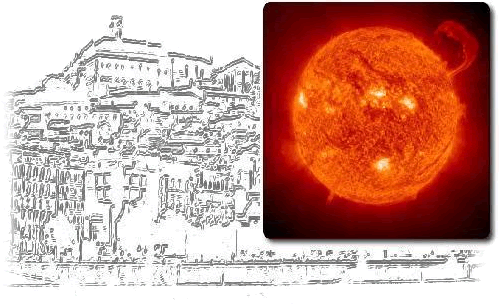|
|
|
|
|
|
|
|
|
|
|
|
|
Pavol Schwartz, Mr. - Dr. |
|
Astronomical Institute, Slovak Academy of Sciences, Tatranská Lomnica, Slovakia |
|
|
|
|
|
|
|
Session 1 - Speaker |
|
Is it possible to use the green coronal line instead of X rays to cancel an
effect of the coronal emissivity deficit in estimation of the prominence total mass from decrease of the EUV-corona intensities? |
|
P. Schwartz (1), P. Heinzel (2), S. Jejčič (3), J. Rybák (1), P. Kotrč (2), F. Fárník (2), Yu. A. Kupryakov (2,4),
E. E. DeLuca (5), L. Golub (5), P.R. Jibben (5), U. Anzer (6), A.G. Tlatov (7), S.A. Guseva (7); 1 - Astronomical Institute of Slovak Academy of Sciences,
05960 Tatranská Lomnica, Slovak Republic; 2 - Astronomical Institute, Czech Academy of Sciences, 25165 Ondřejov, Czech Republic; 3 - University of
Ljubljana, Faculty of Mathematics and Physics, 1000 Ljubljana, Slovenia; 4 - Sternberg Astronomical Institute, 119899 Moscow, Russia; 5 - Harvard-Smithsonian
Center for Astrophysics, 60 Garden Street, MA 02138 Cambridge, USA; 6 - Max-Planck-Institut fur Astrophysik, Karl-Schwarzschild-Strasse 1, 85740 Garching, Germany;
7 - Kislovodsk Mountain Astronomical Station of the Pulkovo observatory, Kislovodsk 357700, Russia |
|
|
|
Total masses of six quiescent prominences observed from April through June
2011 were estimated using multi-spectral observations (in EUV, X-rays, H alpha,and CaII H) and method based on
work of Heinzel et al. (2008). The method uses the fact that intensity of the EUV solar corona at wavelengths below
912 Å is reduced at a prominence by the absorption in resonance continua (photoionisation) of hydrogen and possibly
by helium and subsequently an amount of absorbed radiation is proportional to the column density of hydrogen
and helium plasma. Moreover, the deficit of the coronal emissivity in volume occupied by the cool prominence plasma
also contributes to the intensity decrease. The observations in X-rays which are not absorbed by theprominence plasma,
allow us to separate these two mechanisms from each other. The X-ray observations of XRT onboard the Hinode satellite
made with the Al-mesh focal filter were used because the X-ray coronal radiation formed in plasma of temperatures of the order
of 106 K was registered and EUV spectral lines occurring in the 193, 211 and 335 Å channels of the Atmospheric Imaging
Assembly of the Solar Dynamics Observatory satellite are also formed at such temperatures. Unfortunately, the Al-mesh
filter has a secondary peak of the transmittance at around 171 Å what causes a contribution from the EUV corona
to the measured data of up to 10 % in the quiet corona. Thus, absorption in prominence plasma influences XRT X-ray
data when using the Al-mesh filter. On the other hand, other X-ray XRT filters are more sensitive to plasma
of much higher temperatures (log T of the order of 7), thus observations using these filters cannot be used together
with the AIA observations in the method for mass estimations. This problem could be solved using observations in
the green coronal line instead of X-rays. Absorption of the green coronal line by a prominence plasma is negligible
and this line is formed at temperatures of the order of 106 K. We compare values of the total mass of the prominence
observed on 20 October 2012 on SE limb estimated when using XRT X-ray observations and observations in the green coronal
line obtained at Kislovodsk Mountain Astronomical Station of the Pulkovo observatory (Russia). |
|
|
|
|
|
|
|




 









 |



